By Martha Cecilia Ovadia, Senior Program Associate, Equity & Communications
In advance of TFN’s 2oth Anniversary Conference: Power Forward in Miami, we’ll be sharing interesting and insightful resources that provide context for many of the issues we’ll explore as part of our annual conference, which takes place March 18-20, 2019.
Don’t forget to catch our #MiamiSpotlight and #TFNMiami news on our twitter (Funders_Network) and facebook (Funders’ Network for Smart Growth and Livable Communities) feeds, and check out our TFN 20th Anniversary: Power Forward annual conference page for updates on speakers and sessions.
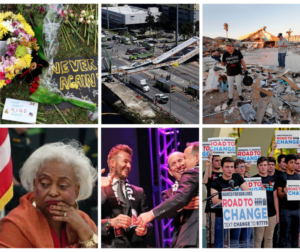 The Year In Review: Looking Back On 2018 In South Florida (Alexander Gonzalez| WLRN | December 12, 2018)
The Year In Review: Looking Back On 2018 In South Florida (Alexander Gonzalez| WLRN | December 12, 2018)
It’s been a whirlwind year in South Florida.
Tragedy struck on Feb. 14 when 17 people were shot and killed at Marjory Stoneman Douglas High School in Parkland. In the months after the shooting, lawmakers, parents and students – many of whom became the faces and voices of the March for Our Lives movement – fought to enact gun control policies and elect leaders who would prioritize school safety.
Then a little over a month later, a bridge collapsed at Florida International University, killing six people. The bridge was supposed to span traffic-heavy Eighth Street, connecting the university and the City of Sweetwater. Federal and state investigators are determining the cause of the collapse.
And in this year’s midterm election, Florida experienced déjà vu from the 2000 presidential election. The state conducted recounts for three statewide offices. The Agriculture Commissioner flipped Democrat while the gubernatorial and U.S. Senate races remained Republican. Read more here.
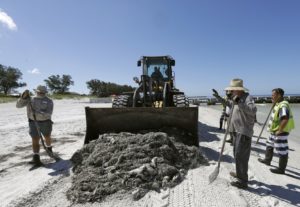
How Florida Counties Dealt With the Red Tide’s Stinking Mess (Leslie Nemo | CityLab | November 28, 2018)
When the red tide started washing dead fish onto Lee County’s beaches in southwest Florida earlier this year, the parks department met the waste like it always has: by having employees scoop it into dumpsters.
But then the toxic algae bloom got worse. The department hired extra day laborers, and when they still couldn’t keep up with the rancid waste on the county’s 50 miles of Gulf Coast shoreline (including Fort Myers and Sanibel beaches), Lee hired a private contractor to help hoist the fish into dumpsters and the county incinerator.
Eventually, the parks department had brought so much of the beach in with the fish, the facility told them to stop—the incinerator could not take any more sand. Read more here.
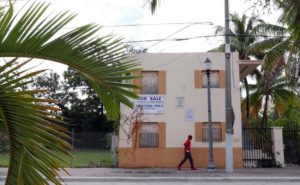 Will this plan save the West Grove? A developer has big dreams for Grand Avenue (Andres Viglucci | Miami Herald | November 26, 2018)
Will this plan save the West Grove? A developer has big dreams for Grand Avenue (Andres Viglucci | Miami Herald | November 26, 2018)
A Chicago developer who’s built a handful of small projects in Little Havana and Coconut Grove in the past four years says he has now nailed down one of the most elusive and significant real estate deals in Miami: The redevelopment of a chunk of Grand Avenue, the distressed core of the historically black and Bahamian West Grove. Read more here.
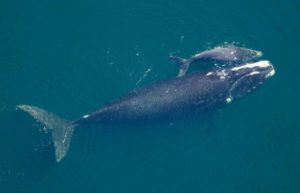 Seismic testing for oil and gas approved for off Florida’s Atlantic Coast (Jessica Weiss | WLRN| December 9, 2018)
Seismic testing for oil and gas approved for off Florida’s Atlantic Coast (Jessica Weiss | WLRN| December 9, 2018)
he Trump Administration has approved the search for oil and natural gas off the Atlantic coast. Late last month, the federal government gave the green light to five applications that allow companies to use seismic testing in different sites, including along part of Florida’s eastern seaboard.
The tests work by using airguns to send sound waves through the water to image the sea floor. The waves then bounce back to deliver information about the location of buried oil and gas.
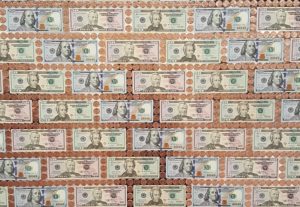 At Art Basel Miami Beach 2018, culture colludes with and challenges consumerism (Taylor Estape | Miami New Times | December 6, 2018)
At Art Basel Miami Beach 2018, culture colludes with and challenges consumerism (Taylor Estape | Miami New Times | December 6, 2018)
For most Miamians, Art Basel is a week of horrific traffic. For some, it’s a chance to engage in a multitude of cultural offerings bubbling up all over the city. For fewer, it’s a chance to buy art offered by a selection of international galleries. According to statistics from Art Basel, about a third of the galleries worldwide pull in less than $500,000 a year in art sales. Another third rakes in anywhere between $1 million and $10 million. Which third is represented at Art Basel is unclear, but what is clear is why this global network of collectors, galleries, and artists finds itself in Miami Beach: More than half of the top 200 art collectors are based in the United States.
Like most things, the art world is a microcosm of what’s happening globally. Representatives of Art Basel tout this year’s political art, the growth of diverse representation from women artists and artists of color, and how Basel plays a role in art’s significance in society, both locally and globally. What’s casually ignored in these types of conversations are things such as ticket prices, sale prices for the art, and who, exactly, these collectors are. Read more here.
About the Author
 Martha Cecilia Ovadia is TFN’s senior program associate for equity and communications. Contact her at marci@www.fundersnetwork.org.
Martha Cecilia Ovadia is TFN’s senior program associate for equity and communications. Contact her at marci@www.fundersnetwork.org.
